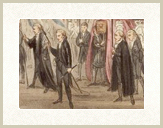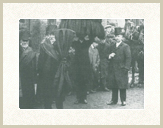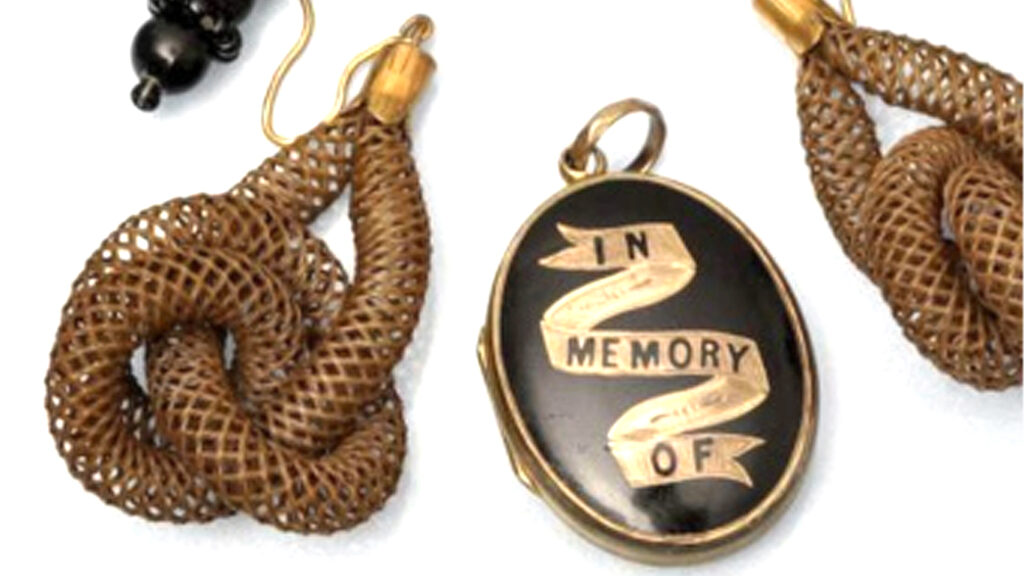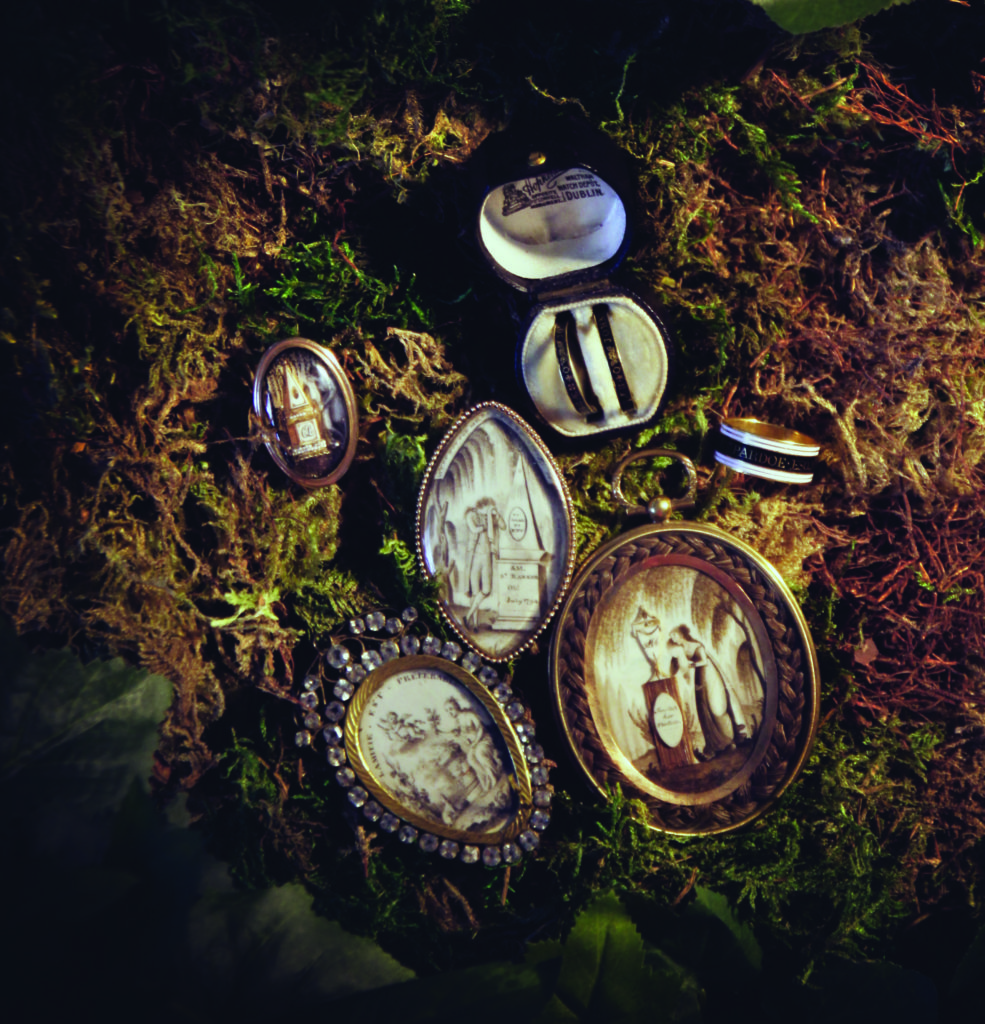Textiles: 19th Century, Part 2
Women were the symbolic representation of the family, from its wealth to its respectability. By the turn of the century, however, those in high society copied the neoclassical style in dress. Black dresses were cut to the neoclassical style, with black and white accessories, hair was covered in a plain, tight, white cambric cap with narrow border, crimped at each side of the face, a small black hood above and narrow lace border. Bonnets and black cloaks with black crape veils hiding the face were worn outdoors.
By the latter century, costume and function were tightly connected for women. Dresses of separate bodice and skirt were worn in bombazine covered in crape. Underwear was often white chemises, drawers and underpetticoats slotted with black ribbon. Black caps, crape trimmed bonnets, and long veils.
First mourning lasted one year and a day, outdoor garments for this would be shown by the plainness and amount of crape, jet jewellery was permitted. After one year and a day, Second stage was introduced. This involved less crape and its application to bonnets and dresses became more elaborate. It was frowned upon if this period was entered into too quickly and it lasted nine months in all. The Third stage (or Ordinary stage), introduced after twenty-one months, involves the omission of crape, inclusion of black silk trimmed with jet, black ribbon and embroidery or lace were permitted. Post 1860, soft mauves, violet, pansy, lilac, scabious and heliotrope were acceptable in half mourning. This period lasted three months. The English Woman’s Domestic Magazine stated that ‘many widows never put on their colours again’ and this was quite a statement for the identity of the woman, which was held under the veil of mourning and family symbolism for the rest of her life. Hats, shawls, mantles, gloves, shoes, fans all changed during mid century, and pagoda sleeves from 1850-70 were fashionable, designed to be stitched to the outer sleeve to cover modesty from the lower arm and wrist. Wide skirts from the 1850s-70s, tie back fashions of the late 1870s and the ‘S-bend’ look of the early 1900s all were adapted to mourning fashion, without a clear definition of difference between them. Throughout the post 1880s decline, in the 1890s, women would wear their veils at the back of the head only, showing hair beneath bonnets at the front for first stage mourning. This defiance was quite bold and marked a large turning point for mourning structure.
As in the 17th century, the household was responsible for the servant’s costume in mourning, hence female servants were given black dresses, bonnets, collars and cuffs of crape (which changed to white trimming during half mourning). This maintained the cult of mourning throughout the classes, as the working class upheld the ideals of mourning regardless of the cost in this instance, but as the 20th century passed and servitude became less prolific, the mourning industry also suffered.
Men’s costume in the 19th century evolved from the opulence of the 18th century to the armband. As discussed, women became the focal point for mourning and the household, men’s regulations were freed from their previous obligations. By the turn of the century, men removed all gilt buttons, buckles and Court swords and replaced them with black ones. Cloaks were worn to funerals, until they were replaced in the latter century with diagonal sashes in black or white crape. These cloaks were often only worn by the undertaker’s men post 1860, but had gone out of fashion by 1890. In a stark contrast to women’s mourning wear, only the black armband was necessary with a black suit. The black suit was not necessary for mourning, as the armband was representative enough.








